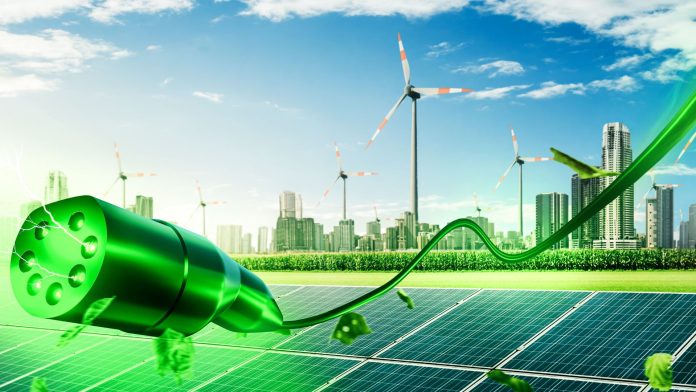This report provides an overview of the most important analyses of production and consumption, import and export of electricity in Croatia for October. Like previous reports, this one places special emphasis on the analysis of the growth in capacity and production from renewable energy sources. These are more necessary than ever, as the abandonment of fossil fuels requires the electrification of Croatia as soon as possible. Therefore, it is necessary to increase both the production and consumption of electricity from renewable sources.
Energy Trends Overview in October
The capacity of solar power plants in Croatia continued to grow, achieving a 2% share in the energy mix in October. Due to the warmer weather during the month, there were no significant oscillations in daily consumption and peak load. Scientists from the European Union have concluded that 2023 is almost certainly the warmest year in the last 125,000 years. Record high temperatures for October were recorded, marking the fifth time this year that such a record was set.
In the first twenty days of October, hydroelectric power plants had low production, especially pumped-storage hydroelectric plants due to water inflow and discharge of accumulations. The Plomin Thermal Power Plant achieved high production of 144 GWh of electrical energy in October. Croatia bought 263 GWh of electricity and sold 23 GWh during the month, resulting in a net import difference of 240 GWh. This import was a consequence of the Krško Nuclear Power Plant malfunction, which has not been producing electricity since October 6th. The nuclear power plant produced 42 GWh in six days of October, and it is estimated that it could have produced 255 GWh for the needs of Croatia by the end of the month.
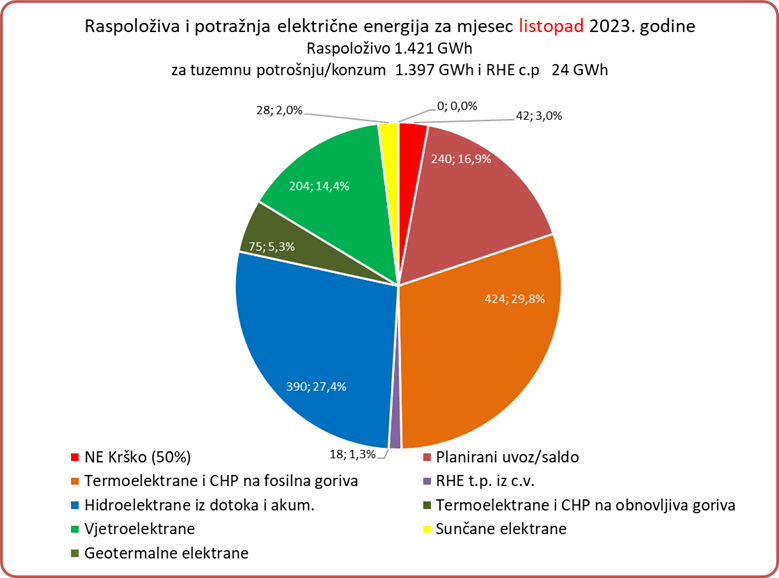
Wind farms produced 204 GWh of electrical energy and achieved a 14.4% share in the available energy, while hydroelectric power plants, due to lower production, achieved a share of less than 30%. There is also a significant physical transit of electricity across the high-voltage network of HOPS for neighboring regulatory areas.
Solar Power Plants Break Records
In the first ten months of this year, 184 MW of solar power plants were installed, which is 20.5 MW per month, or 683 kW per day. Thus, with an assumed average power of 400 W per panel, 1,708 panels were installed daily over the past ten months.
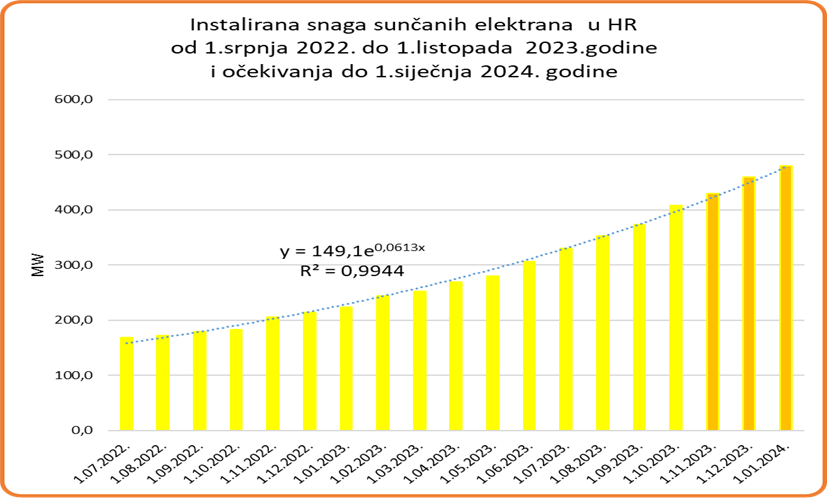
With the increase in installed capacities, the production of electricity from solar power plants is also growing. This year, solar power plants achieved a record production of 43 GWh in July and 41 GWh in August. In just these two months, the production exceeded the total production of solar power plants last year, when they produced only 80 GWh of electrical energy over twelve months.
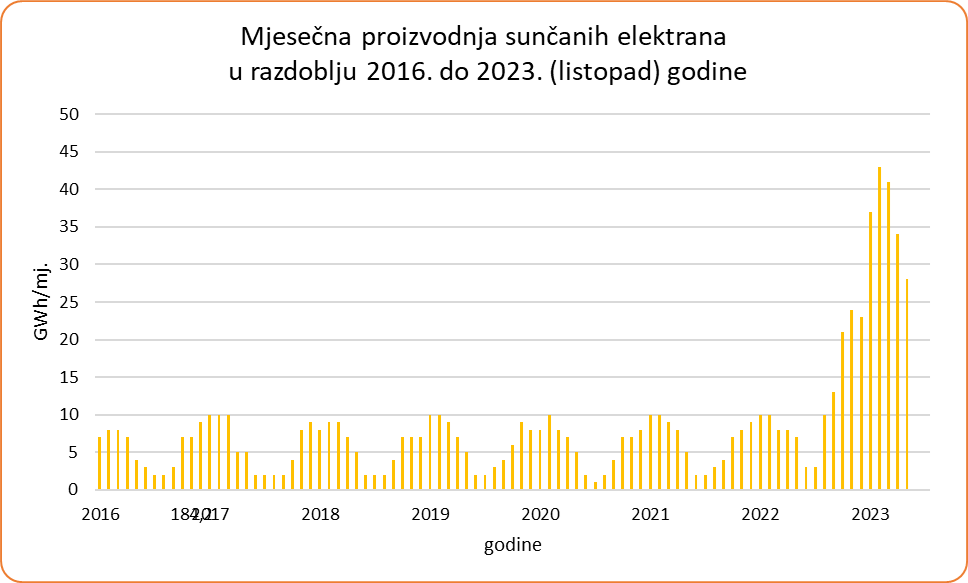
According to our forecasts, the production of solar power plants could reach a level of 300 GWh this year. If this is achieved, the production of solar power plants this year will be equal to, or maybe even greater than, the production in the previous three years (2019-2022) when solar energy produced a total of 297 GWh. Such a result is possible thanks to favorable weather conditions and the continuous increase in production capacities.
Thus, solar energy, along with wind power production, is the second most prevalent technology (after hydroelectric power) in installed renewable energy capacity. The total installed capacity of wind and solar power plants in Croatia is 1500 MW.
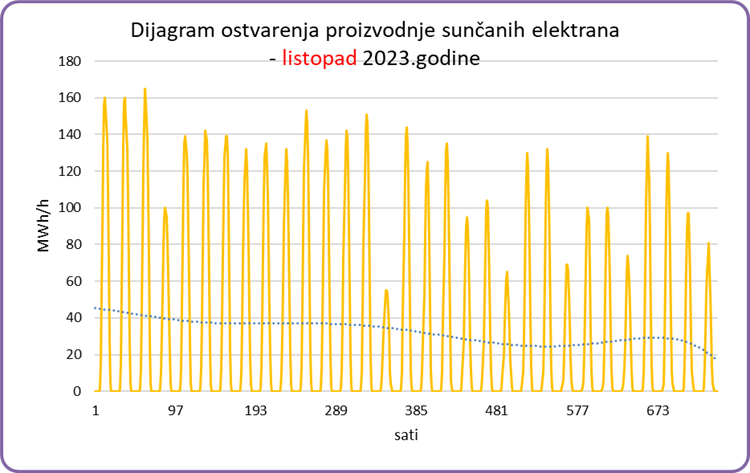
Wind Power Production in October
The total production of wind farms in October amounted to 204,364 MWh, with a capacity utilization factor of 25.1%. This figure is also the multi-year average for this month.
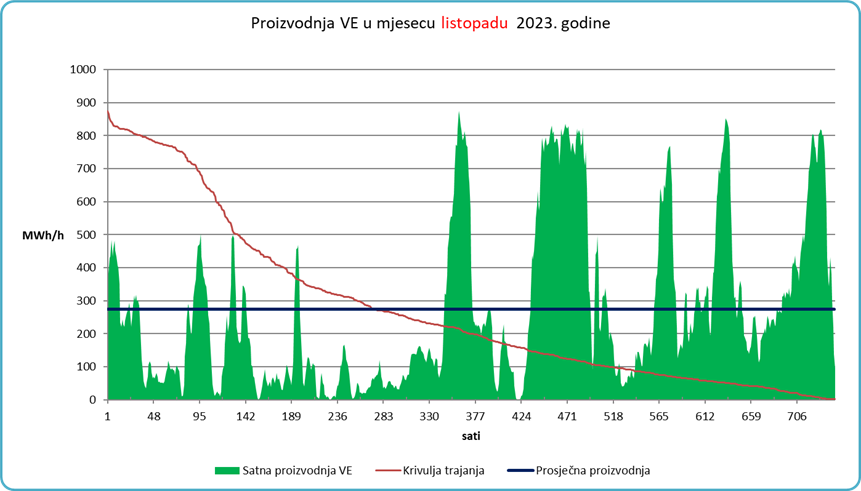
According to available data, electricity production from wind and solar power plants is in a close race with production from the Croatian part of the Krško Nuclear Power Plant (which accounts for 50% of the plant’s production) and represents about 15% of total energy. Thus, combined, solar and wind power plants are the third-largest electricity producers in Croatia since the beginning of this year. Next year, with the increase in new production capacities, it is expected that solar and wind power plants will certainly surpass the production of the Krško Nuclear Power Plant.
Renewable Energy Sources Break Records
We regularly analyze how much of the electricity produced from renewable sources participated in consumption. This record was broken in October.
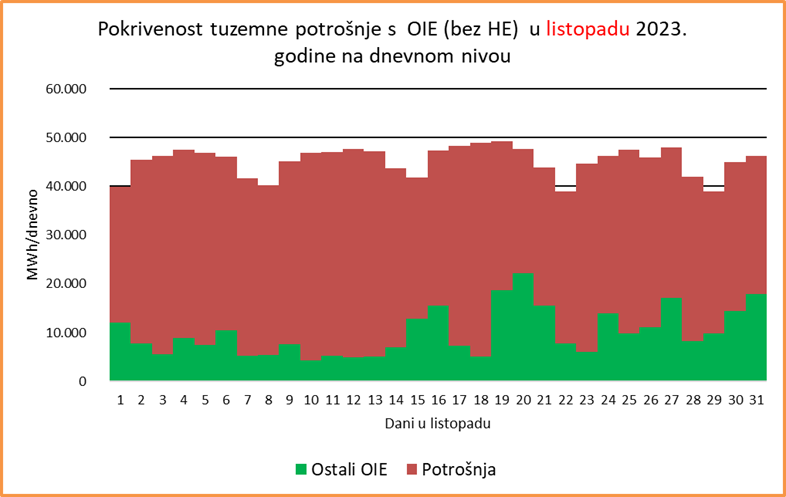
On October 20th, renewable energy sources covered 46.6% of the daily consumption, meaning nearly half of the electricity consumed that day came from renewable sources. An analysis of the production mix on that day shows that renewable energy sources (excluding hydroelectric power plants) produced 22 GWh of electricity, which is a record level of coverage for the day’s total consumption of 47 GWh. On the same day, wind farms also achieved a record production of 19 GWh, marking the best daily record ever recorded.
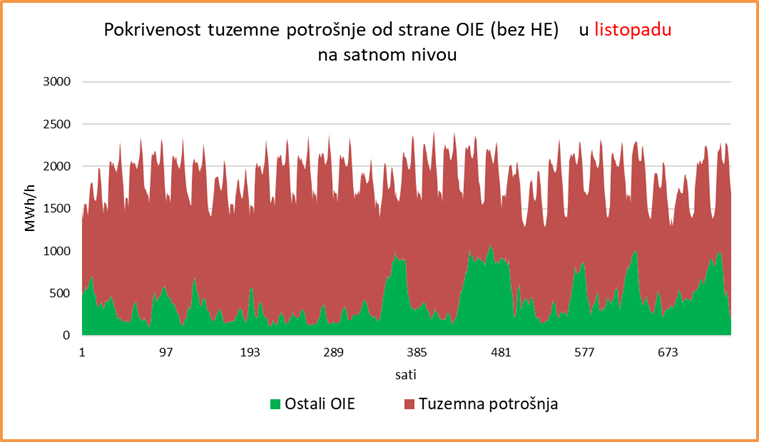
The maximum coverage of electricity consumption produced by renewable sources, excluding hydroelectric power plants, on an hourly basis was a high of 63.8%, and the minimum was 4.7%.
Electrical Energy Trends in the First Ten Months of 2023
The total electricity turnover in the electrical energy system in the first ten months of this year amounted to 21,504 GWh, of which the demand was 15,969 GWh, and the remaining 722 GWh was exported to neighboring markets.
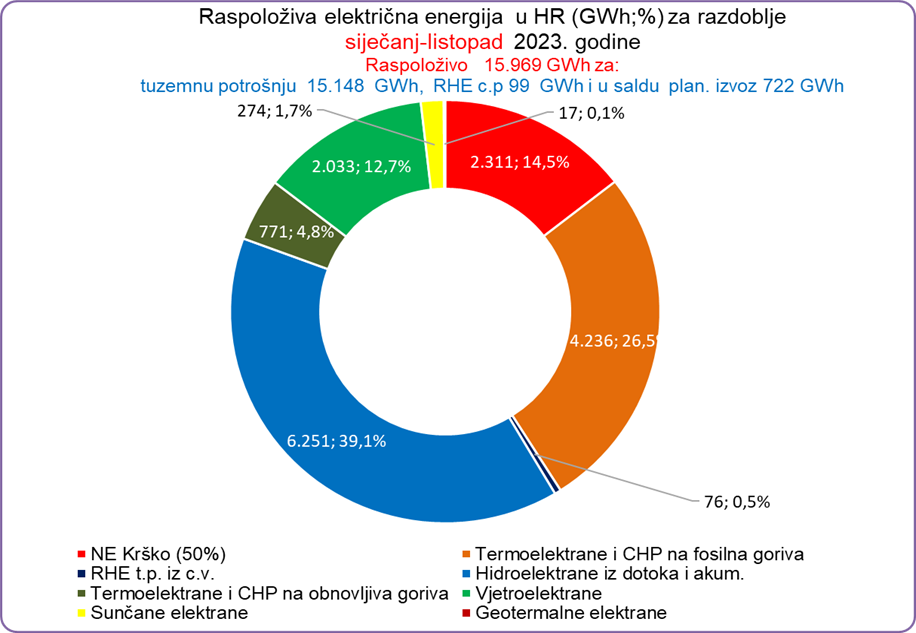
The total electricity turnover in the electrical energy system in the first ten months of this year amounted to 21,504 GWh, of which the demand was 15,969 GWh, and the remaining 722 GWh was exported to neighboring markets.
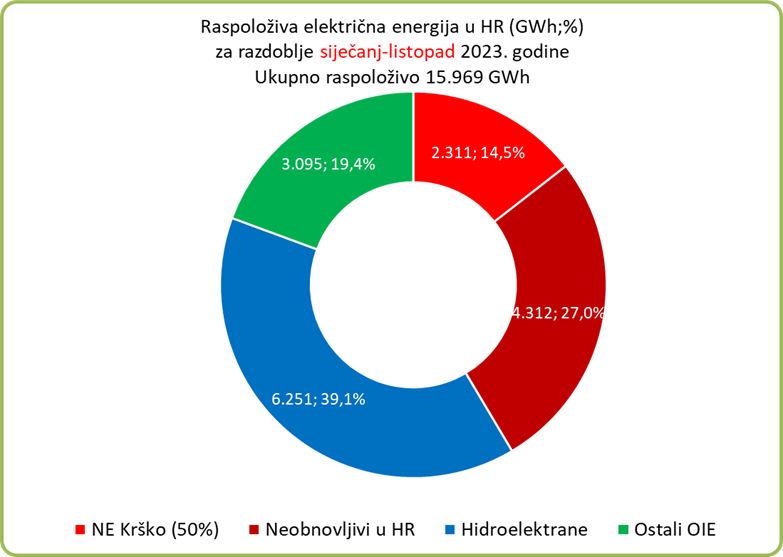
Renewable energy sources produced 58.5% of the available electricity in the first ten months of this year, amounting to 15,969 GWh. Of this, hydroelectric power plants contributed 39.1%, and other renewable energy sources (RES) 19.4%. Non-renewable sources accounted for 28%, and the Croatian part of the Krško Nuclear Power Plant (NE Krško) made up 14.5% of the available energy.
The total electricity consumption was 15,247 GWh, with domestic consumption amounting to 15,148 GWh, and the consumption of pumped-storage hydroelectric plants (RHE) for water pumping was 99 GWh. Since the available energy exceeded the total consumption by 722 GWh, these surpluses were exported to foreign markets during the observed period.
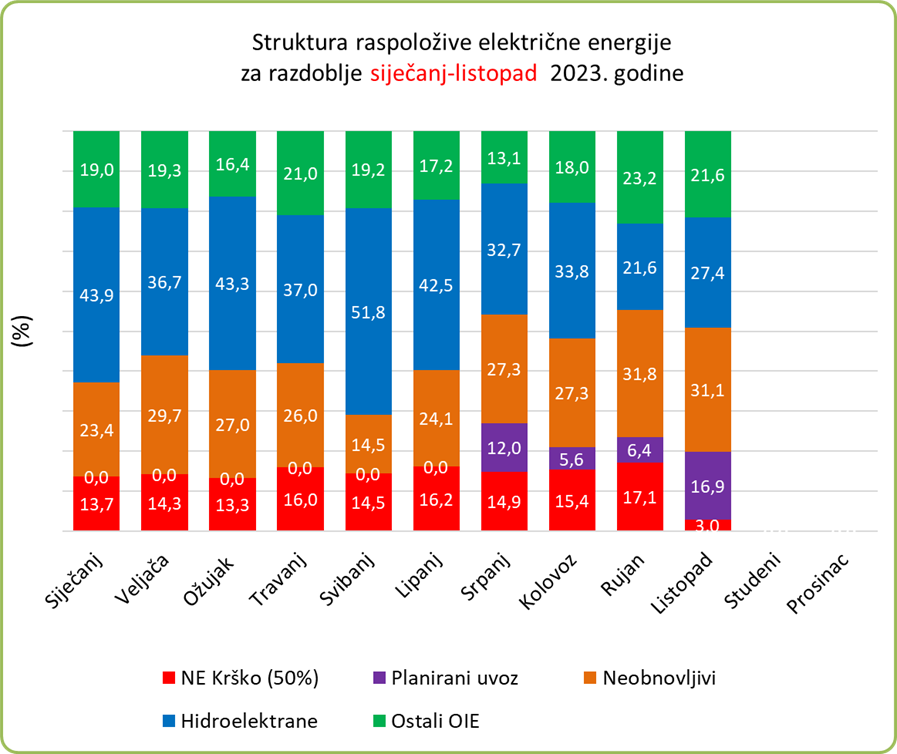
Very favorable energy indicators are evident when observing the electrical energy trends in the first ten months of this and last year.
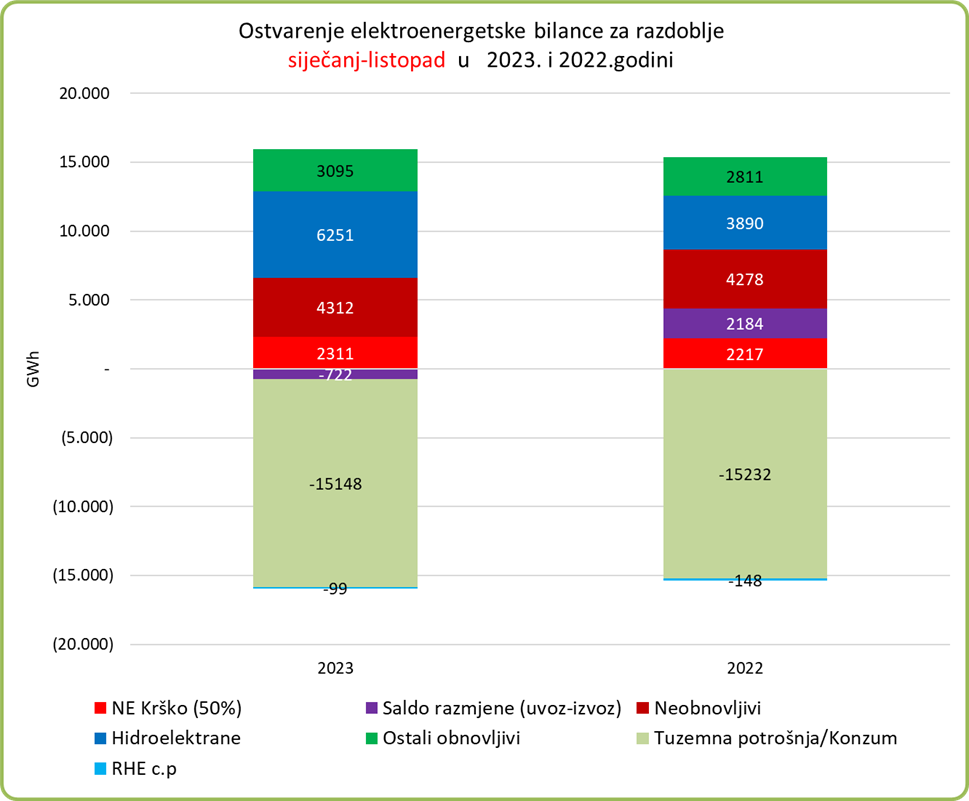
During the observed period, the Krško Nuclear Power Plant produced 94 GWh more electricity for the needs of Croatia. The content of accumulations decreased by 440 GWh compared to the beginning of the year, which is 173 GWh better than the same period last year. Non-renewable sources produced 34 GWh more electricity in the first ten months of this year compared to the same period last year. In the first ten months of this year, we sold 722 GWh of electricity, while in the same period last year, we had to buy 2,184 GWh. This makes a difference of 2,906 GWh, which is an excellent economic result, especially considering market prices.
The production of renewable sources in the first ten months of this year was higher by 2,645 GWh compared to the same period last year. This increase is mostly attributed to higher production from hydroelectric power plants from water inflows and accumulations by 2,361 GWh, wind farms by 156 GWh, and solar power plants by 200 GWh. The production of other renewable energy sources was lower by 72 GWh.
Renewable Energy Sources Production in the First Ten Months of 2023
Renewable sources contributed 58.5% to the available energy in the first ten months of this year. A larger part of this share is made up of hydroelectric power plants with 39.1%, while other renewables constitute 19.4%. It is expected that other renewable energy sources will exceed 20% of the available energy this year.
Non-renewable, fossil energy sources make up 27.0% of the share, and the Krško Nuclear Power Plant accounts for 14.5%.
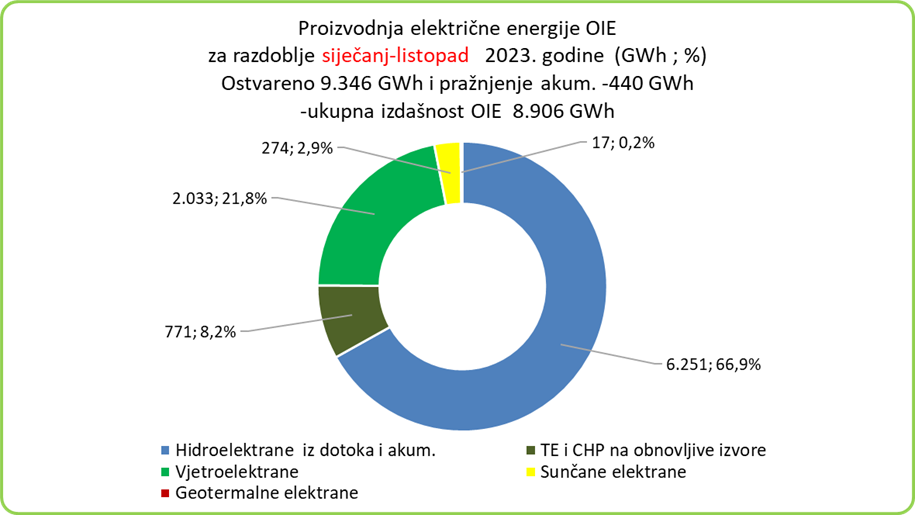
The total production of renewable energy sources (OIE) in the first nine months amounted to 9,346 GWh, and there was a discharge of accumulations compared to the beginning of the year amounting to 440 GWh. Therefore, the total yield/productivity of OIE was 8,906 GWh. With average power utilization factors, higher OIE production is expected by the end of the year, exceeding 11 TWh (about 27 TWh of primary energy).
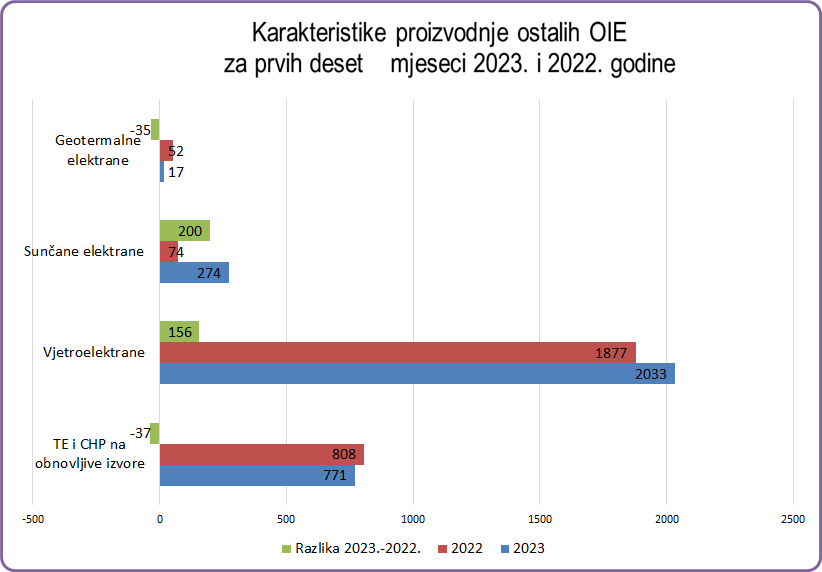
The production of solar power plants in the first ten months of this year was 200 GWh higher compared to the same period last year. Wind farms also achieved excellent production, generating 156 GWh more electricity in the first ten months of this year than in the same period last year. Good results are expected to continue for the rest of the year.
In the preparation of this report, publicly available data published on the websites of HEP, HOPS, ODS, HROTE, CROPEX, NE Krško, ENTSO, DZS, RTE France, RED Electrica, World Data, IEA, EEX, EPEX, and IRENA were used.
The analyses published in the monthly OIEH reports are made available to all those who wish to be informed about the operation and development of the Croatian electrical energy system. The quality and continuity of the service we provide in these analyses stem from a sustainable vision focused on the culture of informing about the work and development of renewable energy sources in our country.


